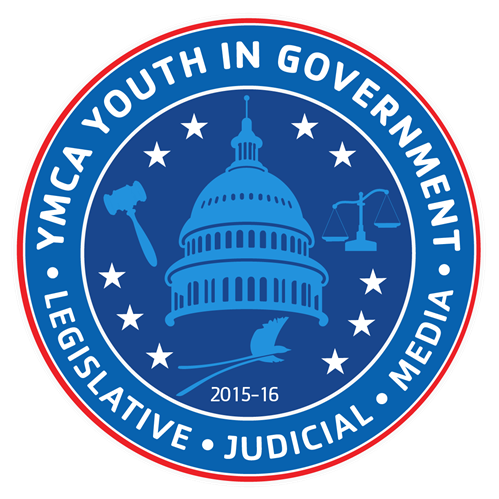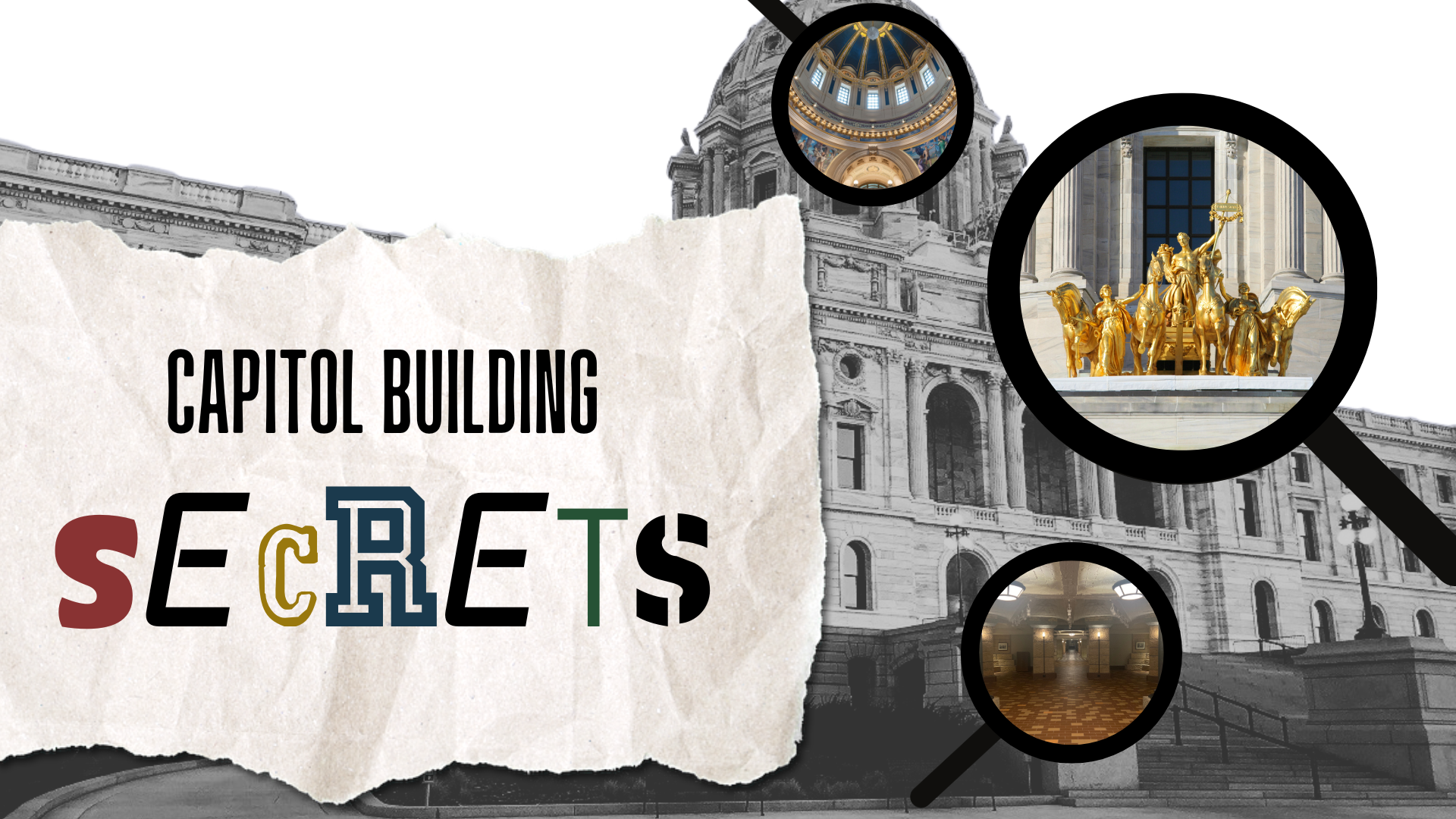Story and image by Lindley Johnson, Shakopee; Edited by Lale Akkin, Mounds View
There is no denying that the Capitol building is one of the biggest aspects that draws people to Youth in Government. Its elegant architecture, beautiful materials, and intricate artistry have a hypnotic pull on all who step through the doors. Every glance reveals something new and each visit is almost as entrancing as the first. One can often feel lost with all the things to look at, so here are some of the most intriguing parts of the capitol to watch for on your next visit.
“The Progress of the State”
Also known as the Quadriga, the Latin word for a four-horse chariot, this statue stands proudly atop the roof of the Capitol with its shining gold hue seen both night and day. The sculpture depicts a chariot of progress pulled by a team of four horses guided by two female figures named Agriculture and Industry. Atop the chariot stands a triumphant figure carrying a cornucopia and a banner proclaiming the state name. This artwork, made of pounded copper over a steel frame and covered in gold leaf, was sculpted by Daniel Chester French and Edward C. Potter in New York and later brought to the Capitol.
Capitol Dome
An iconic symbol of the Capitol, the dome gives the building its recognizable silhouette. Formed in likeness to St. Basilica Cathedral in the Vatican, one of Michelangelo’s most famous works, the dome is quite striking. It has three distinct layers of artistry. First, Georgia marble blocks, matching the rest of the exterior, defy gravity by supporting each other in arches. Next, the second layer is a structural support cone of brick and steel. Finally, the lavishly decorated interior hangs above the rotunda, displaying frescos and molding.
The Rotunda
When walking around, ignoring the circular area at the heart of the first floor is impossible. Glass cases outline the perimeter of the rotunda, battle flags lying within them. In the center of this room, a glass and brass eight-pointed star symbolizes the state’s nickname: the North Star State or “L’Étoile du Nord.” Looking up in the rotunda, various paintings, zodiac signs, and walls decorated with five eagles can be seen from the first and second floor.
Rathskeller Cafe
Deep under most of the Capitol building lies a German dining hall more than 115 years old called the Rathskeller. German immigrants brought the idea of the Rathskeller to Minnesota and Cass Gilbert, the Capitol architect, quickly adopted it. After being restored, German sayings adorn the ceilings and walls of the interior, woven in between pictures of vines and animals. People can now eat on the many tables in this merry atmosphere.
First Floor Columns
At first glance, people can only note the size of the pillars on the first floor. But in truth, their history and creation offer far more fascinating stories. About 20 different materials make up these pillars, each one being unique. They were cut from whole pieces of stone and transported over great distances to get to the site.
Capitol Art Gallery
While delegates may know of the other items on this list, this one remains more elusive. On the third floor of the capitol, rooms 320 and 321, an Art Gallery open to the public features traveling exhibits celebrating the diversity and talents of Minnesotans. Currently, the gallery shows the Lest We Forget Collection by Fred Amram and Sandra Brick, which is a commentary on the horrors of the Holocaust and the refugee experience. This exhibition will leave Feb. 29, so delegates should visit it again after the conference.
These are just a few of the many spaces to explore in the Capitol, but it only takes a keen eye to find hidden secrets in every trim and painting. If you have free time, wander through the halls and look to see what you can find in this incredible building. If you need more pointers, the scavenger hunt below can help.
Find…
- Five eagles
- Five chandeliers
- Three ears of corn
- Three bronze busts
- Two cornucopias
- Two Minnesota flags
- One North Star
- Your zodiac sign

